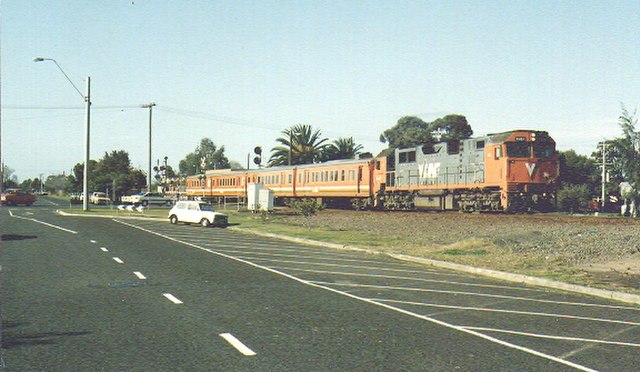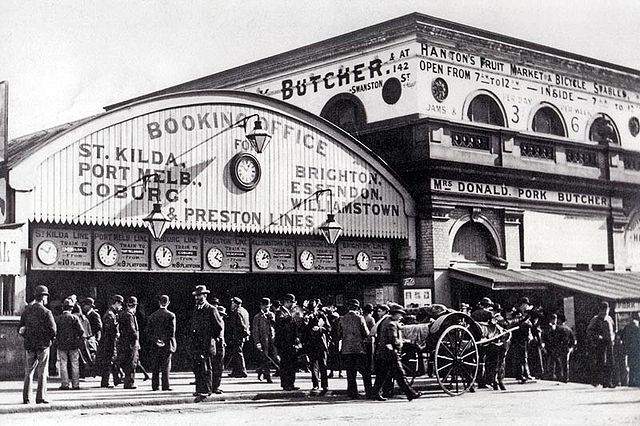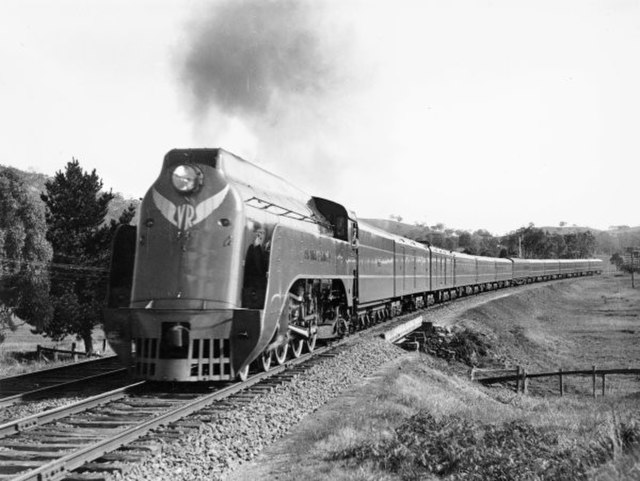New Deal for Country Passengers
The New Deal for Country Passengers was a timetable introduced on 4 October 1981 in Victoria, Australia which revolutionised the provision of country passenger railway services in that state. Thirty-five little-used passenger stations were closed, rolling stock utilisation was improved, and new rolling stock introduced. The timetable and associated service changes resulted in an average patronage growth of 8.7% per year, from 3 million in 1981 to 5.6 million passengers in 1990/91.
N class locomotive with H type carriages, wearing the 1980s V/Line livery
Rail transport in Victoria
Rail transport in the Australian state of Victoria is provided by a number of railway operators who operate over the government-owned railway lines. The network consists of 2,357 km of Victorian broad gauge lines, and 1,912 km of standard gauge freight and interstate lines; the latter increasing with gauge conversion of the former. Historically, a few experimental 762 mm gauge lines were built, along with various private logging, mining and industrial railways. The rail network radiates from the state capital, Melbourne, with main interstate links to Sydney and to Adelaide, as well as major lines running to regional centres, upgraded as part of the Regional Fast Rail project.
Pre 1910 Flinders Street station building
The Spirit of Progress headed by locomotive S301 Sir Thomas Mitchell near Kilmore East in 1938
Train exiting the Melbourne underground loop
N class locomotive with N type country passenger carriages.





